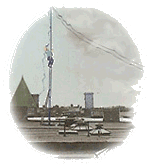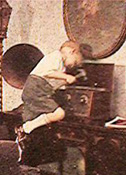
It is the nature of human existence to think that we are in control. We learned early to control fire & to tame wolves. I guess that gave us all a destiny to build stuff. Not neat stuff or clever stuff or even good looking stuff. Just stuff. As long as we are control, humanity figures it's a good show.
Controlling the electromagnetic spectrum goes back a long way then.
Like the summer when Dad had me take Mom's car (she was at an education conference in New York) to the local lumber supply house with a trailer & hitch (that he'd rented earlier) to pick up an order that he'd made over the phone. Pay with cash. Just go there and come back. No extra stops. You understand?
Yeah, yeah, I understood.
Dad turned all that lumber into something like six tables. Full size tables like you'd sit down and eat at. Or the kind of table that you'd have in the basement 'cause it's cooler down there in the summer & we would all end up eating supper down there because of the heat. That kind of table.
Six tables.
So early on, I was introduced to doing stuff like that. If you wanted a table, you built one. If you wanted a radio, you built one. If you wanted to drive your family crazy building stuff, you built stuff. It was the only way. A natural law, something as old as the human genome.
You remember the crystal set at the start of this nordic saga? Well, I went from that to a one tube radio kit that Dad brought home. I think I asked for it
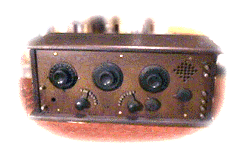
somewhere along the line. Either that or he brought it home 'cause he knew I'd want to build something. However, he was not expecting that I wouldn't read the instructions or put the wires in their places according to some sort of step-wise plan. 'Cause that's what I did and that's why it didn't work.
Dad finished the job & got the kit working.
Dad knew about stuff that most folks went to college for. He knew all sorts of stuff. And he knew how to make beautiful things on paper and with wood and metal and a trailer full of lumber hauled home while Mom wasn't there to provide intervention.
I didn't know this at the time, back when I was a kid making my own cap guns. (Seriously, I made 'em with a file and a hack saw and a pair of tin snips and some drills. Locks, triggers, hammer, pan, the whole thing, right down to the
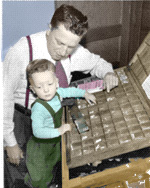
finely sanded and covered in multiple coats of boiled linseed oil stocks. Ah, I was good at it once . . . ) I didn't know that intervention keeps people from going over the edge and filling the basement up with tables.
I learned about intervention much later.
But the real neat thing is how Dad showed me how metaphors work. How a tube is just another way of getting noise out of the air, if you take the time to push the electrons into it right. He showed me how one-step-at-a-time action is part of life. Like setting type for QSL cards.
It's the axe-maker's gift.
Chipping flints in a cave or putting chips on a circuit board, it's all the same linear progression of ideation, the grand wash of neural chemistry that allows us high-maintenance primates the pleasure of the company of our parents, the lessons they can teach us. . .
Building Stuff from Kits
Updated 25 July 2004
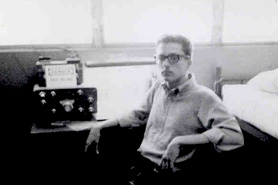
After I'd been in the USN for about a year, once I finally figured out who I was & what the heck I was doing there, I got interested in radios again.
See, I'd taken time off somewhere around 1967 -- maybe even before that -- to devote more of my time to flirting with disaster. I had a neurotic girlfriend. We'd have arguments and she'd try to jump out of a moving car. Then the true 60s hit & I became a hippie. Then I joined the Navy. Don't try to figure it out. I sure didn't. At least until I'd been in the USN about a year and finally got back into radios again.
Only this time I had money. What I didn't spend on stupid stuff like drinking, I began to spend on stupid stuff like magazines and books about radio. Then I bought a Heathkit SB310 receiver. The kit.
By some stretch of reason and good luck, I managed to get it put together without blowing anything up or setting the barracks on fire. It was a good receiver, much better than any receiver I'd had up to that time, including the ill-fated Hallicrafters S38E
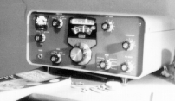
that disappeared when the hippie pad I'd been crashing in caught fire. After I'd moved out, of course.
Once I got SB310 built, I started studying for the ham radio license exams. That led to me buying and building a Heath DX60B transmitter. Now that was fun. I somehow managed to get that working too. I even got a license (as already told in this story) and had gotten on the air with it.
Looking back on that stuff now, I have to wonder how the hell all that stuff survived my hands. But this was back when my hands didn't shake every time I picked up a soldering iron or a pair of pliers. I even had a good memory too! Which, when you think about it, is another of life's little miracles, considering I'd been a hippie and all that.
And then things got interesting!
I had been reading enough books about how electrons worked that I began to think I could design stuff & see it work. I got an Allied Radio catalog. This was back when you could mail-order stuff & it would show up in a big box for your and your friends to marvel over. I built an antenna tuner. It didn't work. Seriously. It didn't work.
I think it got left in Puerto Rico.
And then, after a year had gone by & it was time for me to ship out, I ordered
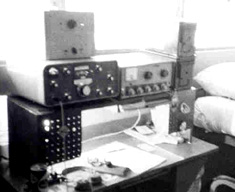
another Heathkit transmitter, an SB401. I ordered it to have it delivered to my parents' house in Kettering, Ohio. The SB401 was the companion transmitter to the SB301 receiver that Heathkit had. But it wasn't mated to the SB310, which was never designed for that kind of stuff. So I modified it.
The end result of all this was that:
(a) I learned a lot about things I didn't know. Like why stuff that isn't designed to be used a certain way will never work the way it wasn't designed to work only after many hours of frustration and insane hair-pulling.
(b)Although I did get it working the way it shouldn't, I still had to wonder what madness made me buy a separate receiver & transmitter when I could have had a real transceiver all along.
(c)Once I recognized (b), I sold the stuff I had to buy something that's worse than the stuff I couldn't get working because it wasn't designed to work that way.
(d)I spent a lot of money for what basically comes down to nothing.
So over the course of the rest of my USN enlistment, I became very sure of my shortcomings. This allowed me to get a job at a local weekly newspaper for the first four years or so that I was out of the Navy and then get a job at the R. L. Drake radio factory in Miamisburg. And that was where I went back to school.
The first thing I learned was patience . . .
Rehab is for Quitters
Updated 25 July 2004
Now that you're read this far, if you think that I've stopped being interested in how things work, you're wrong. I've just come to an agreement with my shaking hands, my bifocal vision & my ability to forget what I'm doing so well that I leave things half-done. We have a truce, my age-born capacities and I. We know that sometimes it's nice to try the challenge. So sometimes I do try to fix stuff.
This time, however, once I feel like reaching for that hatchet, I get up from what I'm doing and turn it over to people who
don't have my real-world experience.
And as for that 20-parts limit: I do have an intervention team ready at any time to restrain my shaking hands & my bleary-eyed view. As one of the maintenance guys at work said once when I started talking about intervention, "Rehab is for Quitters!"
At which point I quit talkin' about intervention & rehab and can now tell you this all
leads to the next page.
